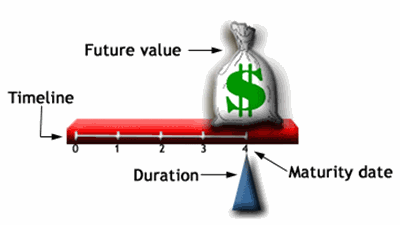YIELD TO MATURITY
The Yield to Maturity (YTM) of a bond is understood as being the annually compounded rate of return that an investor earns, if he does buy the bond at the current price and holds it until its maturity.
The YTM can also be perceived as being quite simply the annual discount rate that sets the present value of the promised payments equal to the current price.
Useful considerations regarding the YTM and a bond‘s coupon rate:
– When a bond‘s coupon rate is lower than its YTM, then we can say that the bond is selling at a discount.
– When a bond‘s coupon rate is higher than its YTM, then we can say that the bond is selling at a premium.
– When a bond‘s coupon rate is equal to its YTM, then we say that the bond is selling at par.
Yield to Maturity (YTM) formula in text:
Yield to maturity (YTM) = [ sqrt[n] ( Face value / Present value ) ] – 1




